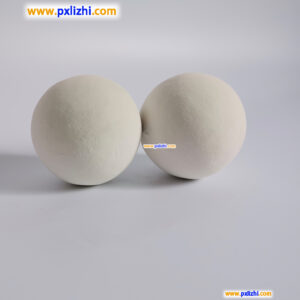
# Inert Ceramic Balls for Industrial Applications
## What Are Inert Ceramic Balls?
Inert ceramic balls are spherical ceramic materials designed for various industrial applications where chemical inertness, thermal stability, and mechanical strength are required. These balls are made from high-quality ceramic materials such as alumina, zirconia, or silicon carbide, which provide excellent resistance to corrosion, high temperatures, and abrasion.
## Key Properties of Inert Ceramic Balls
Keyword: inert ceramic ball
Inert ceramic balls possess several unique properties that make them ideal for industrial use:
– High chemical inertness
– Excellent thermal stability
– Superior mechanical strength
– Low porosity
– Resistance to abrasion and wear
– Long service life
## Common Industrial Applications
### 1. Catalyst Support in Chemical Reactors
Inert ceramic balls are widely used as catalyst supports in chemical reactors. They provide a stable surface for catalysts while ensuring proper gas or liquid distribution throughout the reactor bed.
### 2. Packing Material in Distillation Columns
These ceramic balls serve as efficient packing materials in distillation and fractionation columns, improving mass transfer efficiency while withstanding harsh chemical environments.
### 3. Heat Exchange Media
Due to their excellent thermal properties, inert ceramic balls are used as heat exchange media in various high-temperature processes.
### 4. Grinding Media
In the ceramics and paint industries, these balls function as grinding media in ball mills, offering superior wear resistance compared to metal alternatives.
## Advantages Over Other Materials
Inert ceramic balls offer several advantages over traditional materials:
– Longer lifespan than metal balls in corrosive environments
– Better thermal stability than polymer alternatives
– More consistent performance over time
– Lower maintenance requirements
– Reduced contamination risk in sensitive processes
## Selection Considerations
When choosing inert ceramic balls for industrial applications, consider these factors:
– Chemical compatibility with process media
– Operating temperature range
– Required mechanical strength
– Size and density specifications
– Surface characteristics
– Cost-effectiveness for the specific application
## Maintenance and Handling
Proper maintenance and handling can extend the service life of inert ceramic balls:
– Regular inspection for cracks or wear
– Proper cleaning procedures
– Correct storage conditions
– Careful loading and unloading techniques
– Monitoring of performance indicators
## Future Trends in Ceramic Ball Technology
The inert ceramic ball industry continues to evolve with:
– Development of new ceramic compositions
– Improved manufacturing techniques
– Enhanced surface treatments
– Customized solutions for specific applications
– Integration with smart monitoring systems
As industrial processes become more demanding, inert ceramic balls will continue to play a vital role in ensuring efficient and reliable operations across various sectors.